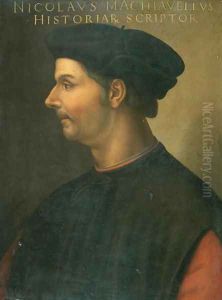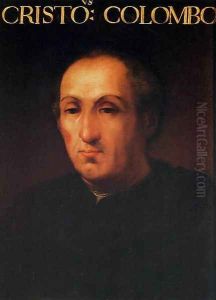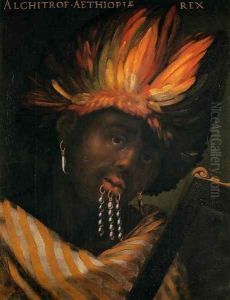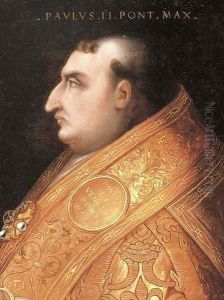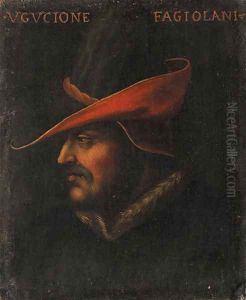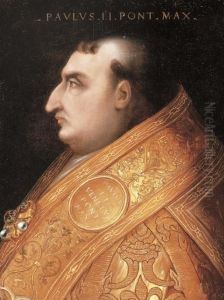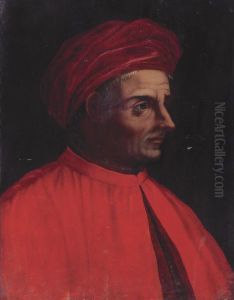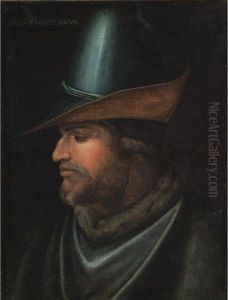Cristofano dell' Altissimo Paintings
Cristofano dell'Altissimo was a significant Italian painter of the Renaissance period, born in 1525 in Florence, Italy. Not much is known about his early life and training, but it is evident that he became a prominent figure in the Florentine art scene of the 16th century. He is most famous for his series of portraits, which were commissioned by the influential Medici family. These portraits were intended for the decoration of the Medici’s residence, illustrating an extensive collection of famous men and women from history and contemporary times, known as the 'Series of Illustrious Men.'
Dell'Altissimo's work was heavily influenced by the earlier Renaissance artists, and his style is characterized by its meticulous attention to detail, vibrant colors, and the clear, precise depiction of his subjects. His portraits are noted for their realism and depth, capturing not just the physical likeness of his subjects but also a sense of their personality and stature. This was in keeping with the Renaissance ideal of the individual and reflected the cultural and intellectual revival of the time.
Throughout his career, Cristofano dell'Altissimo remained closely associated with the Medici family, who were the patrons of many artists during the Renaissance. His contributions to the Medici collection were invaluable, adding over a hundred portraits to the corpus, which served not only as decoration but also as an educational tool, showcasing the figures who shaped human thought and history.
Despite his significant contributions to Renaissance art, Cristofano dell'Altissimo's work was somewhat overshadowed by his more famous contemporaries, and he did not achieve the same level of fame as some of his peers. However, his portraits remain an important part of the study of Renaissance art, offering insights into the era's cultural, social, and intellectual contexts. Cristofano dell'Altissimo died in 1605 in Florence, leaving behind a legacy that, while not as well-known as that of some of his contemporaries, is nonetheless appreciated by art historians and collectors for its unique contribution to the portrait genre in the Renaissance.
